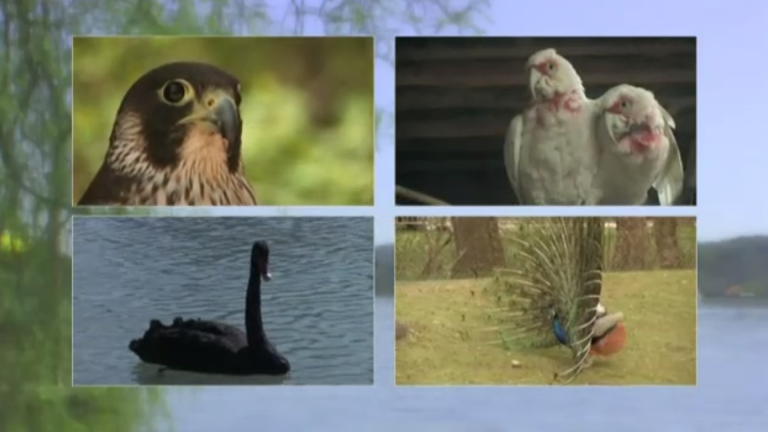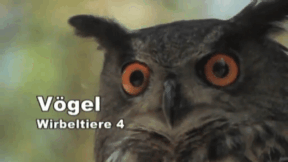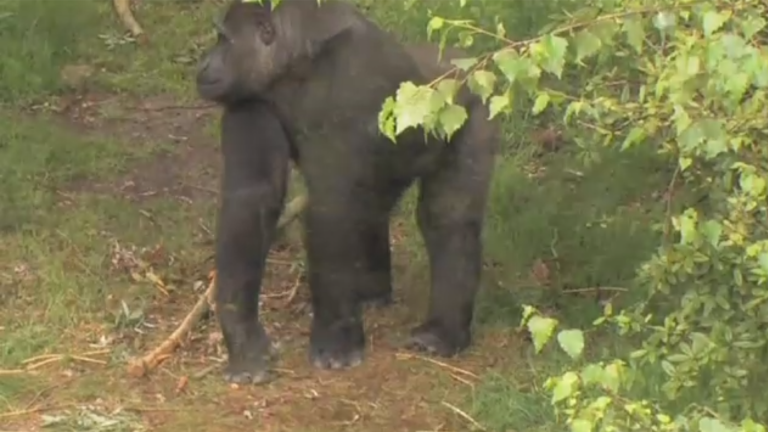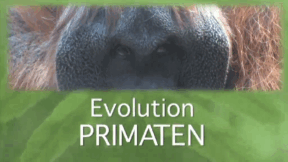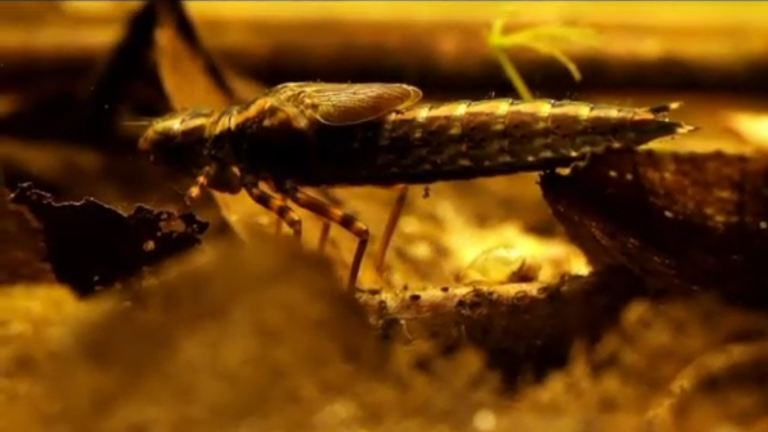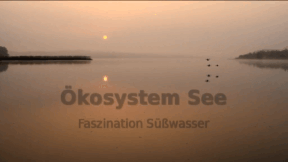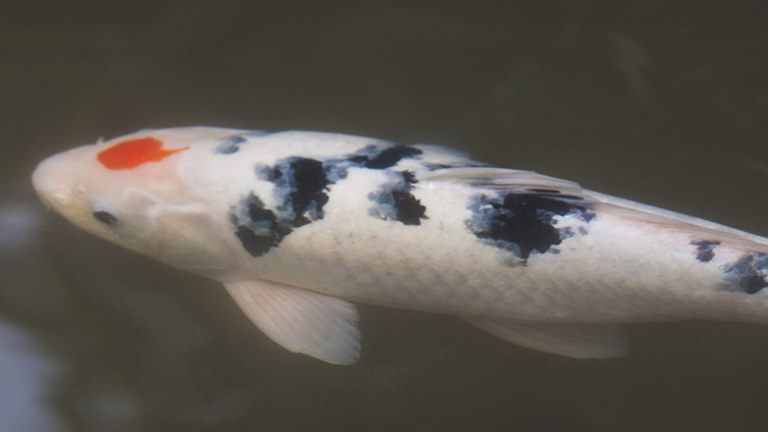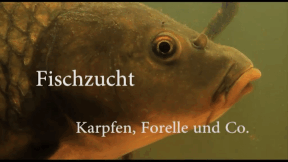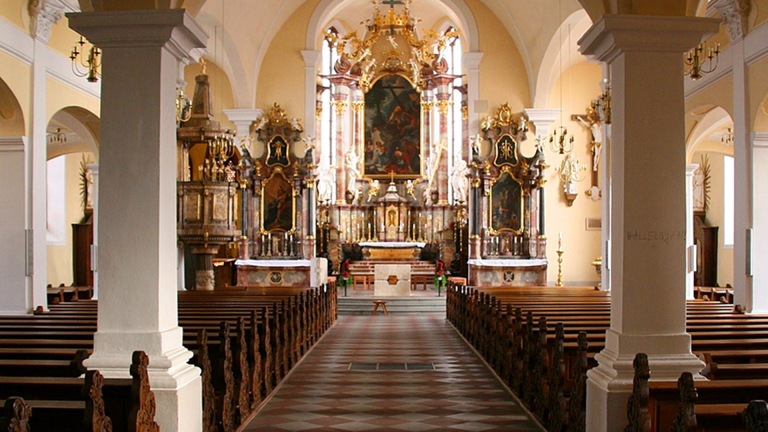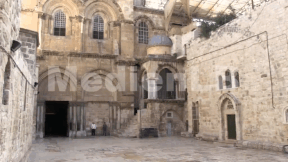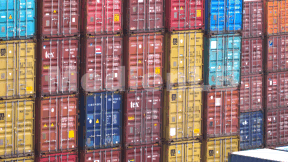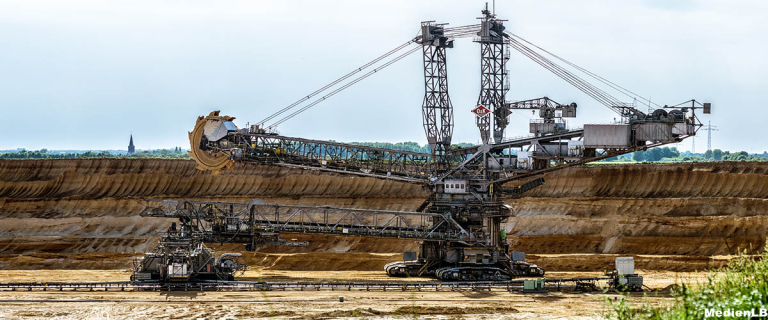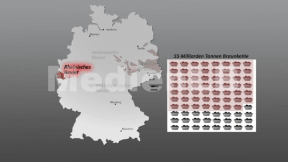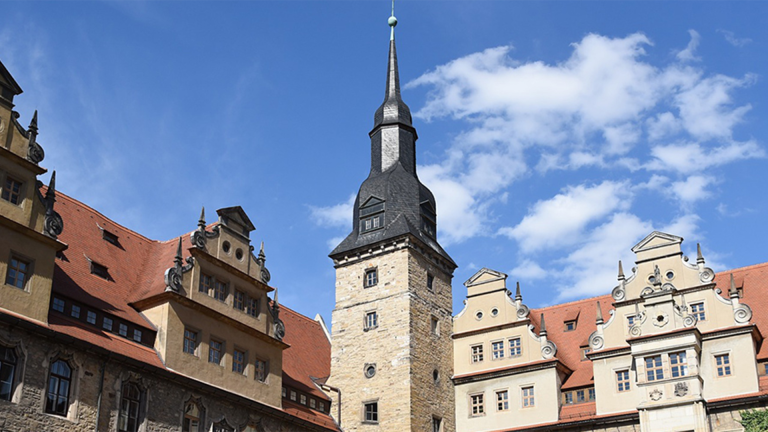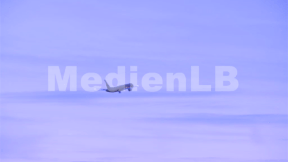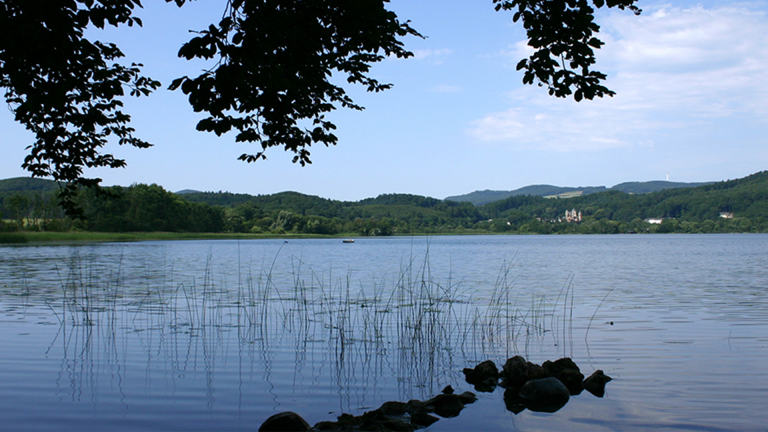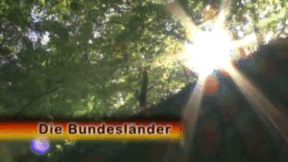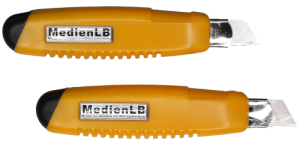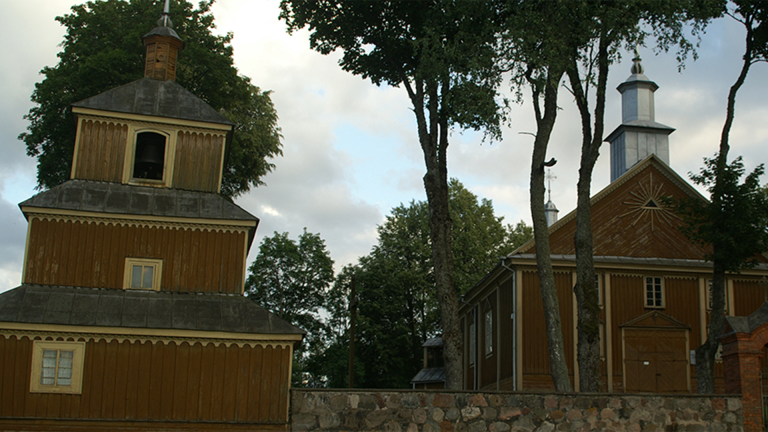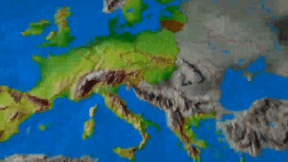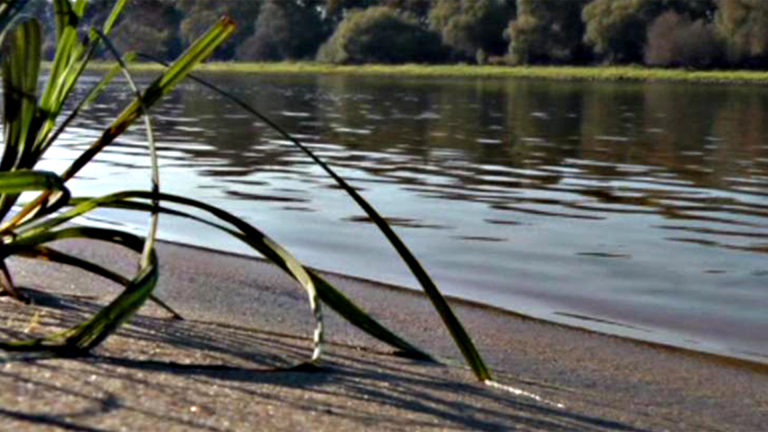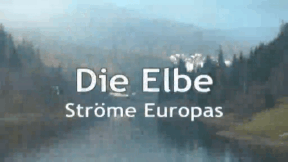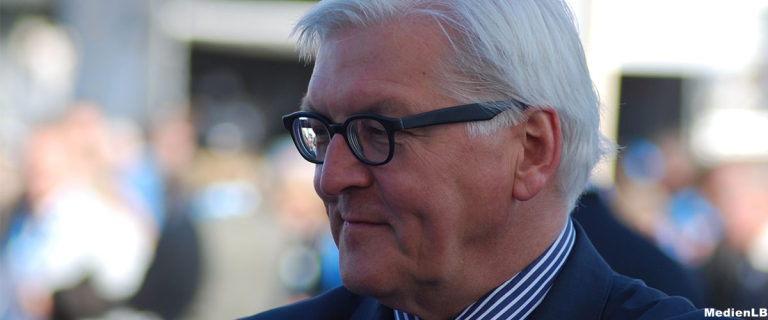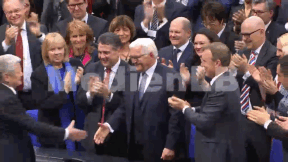Suche:
- # Artistry
- # Biology
- # Chemistry
- # Ecological
- # Economy
- # English
- # Foreign Language
- # Geography
- # German
- # Health
- # History
- # Informatik
- # Latin
- # Mathematics
- # Media Education
- # Music
- # Physics
- # Politics / Civics
- # Preschool
- # Primary School
- # Religion
- # Society
- # Sports
- # Technology
- # Training of Teachers
- # Vocational Education
Birds
This DVD from the Vertebrates series comprehensively introduces birds by means of various examples of indigenous, tropical and polar bird species. Among other things, it provides information on typical bird characteristics such as skeleton and bone structure, structure and function of the beak and feathers as well as the principle of light-weightness. Impressive close-ups of prepared bird bones as well as of a feather’s vane serve to illustrate these aspects. The adaptability of birds to the environments of air, land and water as well as to different kinds of food are shown by means of the examples of typical representatives of the species such as eagle and falcon, emu, duck, moorhen and kingfisher. Here, the pupils also learn about the relation between diet and shape of beak. The reproduction and breeding of birds is illustrated with impressive outdoor pictures of courtship and nest-building with different bird species, the hatching of a chick, the raising of grey herons up to the squabs’ first attempts at flying. Furthermore, the menu includes additional pictures as well as a tabular list of the different breeding times of altricial and precocial birds. Thus, this DVD offers flexibility and variety in the classroom and is especially suited for interactive learning.
Learn moreEvolution
Of all mammals existing today, the primates have the oldest phylogenetic tree. This film shows on the basis of extant species of the order of primates, which we humans also belong to, the phylogenetic tendencies in evolution from the treeshrew to prosimians, monkeys and apes to the genus homo. Special emphasis is laid on the visible outward characteristics of the skull and its sense organs, changes in the position of the spinal column as well as the development of extremities and their adaptation to various habitats. Changes in the anatomy of the skull, the development of the eye socket and also the shifting of the eyes from the sides to the front position, the dental structure and development of the jaw bones and the changing proportions of the mandible skeleton and the brain case are demonstrated on genuine skulls. The film analyses in detail the evolutionary tendencies of primates and convincingly answers the question on the origins of their development.
Learn moreEcosystem Lake
Lakes are stagnant waters that look quite peaceful to us. But the quiet is deceptive: above and below the water surface, life is anything but peaceful. Phytoplankton and zooplankton are eaten by small predators such as polyps or hydrachnidiae. Toebiters, dragonfly and beetle larvae are food for the water scorpion. As every animal feeds on different prey and in turn is eaten by various predators, a food web is created. The amount and variety of the lake inhabitants depends on the concentration of nutrients. In clear lakes, aquatic plants may spread down to a depth of 10 metres. Different zones with particular plant species are clearly visible. Also animals above the water profit from the rich underwater life, for example the waterfowl. Ever since the lake was formed, wind and waves have been carrying dead plants and animals to the shore, where they have sunk down and decomposed. At the same speed at which the lakeside grows, the water surface of the lake shrinks. With its extensive additional material the didactic DVD is ideally suited for use in the classroom.
Learn moreFish Farming
Lakes, rivers and streams are the natural habitats of our freshwater fish. Some of them, such as carp, trout and char, are eaten as food fish. But where do the fish come from and why have our lakes and rivers not been fished dry yet? Since the Stone Age people have been catching fish for subsistence. Fish is an important source of protein. With a wide variety of methods, such as fishing rods or nets, we hunt them successfully.
Learn moreKirchen
Kirchen haben eine lange Tradition und von außen sind sie heute meistens gut erkennbar. Aber wie sehen Kirchen eigentlich von innen aus? Denn egal ob alt oder neu, groß oder klein ─ so unterschiedlich sie auch aussehen, die meisten Gegenstände findet man in jeder Kirche. Der erste Blick, wenn man eine Kirche betritt, fällt meist auf den Altar und auf das über ihm hängende Kreuz. Für die Hostien, die den Christen so wertvoll sind, gibt es in der Kirche einen ganz besonderen Platz ─ den Tabernakel. Im Tabernakel werden die geweihten Hostien nach dem Abendmahl aufbewahrt. In der Nähe des Tabernakels hängt das ewige Licht.
Learn moreSeltene Erden
Der technische Fortschritt versorgt die Menschheit zuverlässig mit innovativer Technologie. Dies hat die Nachfrage nach spezifischen Rohstoffen, etwa für Mikrochips, Rußpartikelfilter, und Dauermagneten sprunghaft steigen lassen. Metalle wie Lithium, Cer, Neodym und weitere gehören zu den sogenannten „Seltenen Erden“. Der Bedarf nach ihnen hat große geopolitische Auswirkungen, und hat zum Aufstieg Chinas, das den Großteil der Lagerstätten auf seinem Gebiet birgt, entscheidend beigetragen.
Learn moreLignite
Lignite, or brown coal, is an important energy carrier for providing Germany with electric power. In 2017 some 23 % of the country’s electricity was still obtained from lignite. German mining activities are centred in the Rhenish lignite fields to the west of Cologne. In the new eastern states, lignite is mainly extracted in the mining areas of Central Germany and Lusatia.
Learn moreSaxony-Anhalt
The federal state of Saxony-Anhalt is not only abundant with natural beauty but also boasts a diverse landscape of castles, palaces and churches, some of which are UNESCO World Heritage Sites.
Learn moreRhineland-Palatinate
The German Federal State of Rhineland-Palatinate lies in the southwest of the Federal Republic of Germany. This DVD begins with an overview over the state with its nine natural regions: Ahr Valley, Eifel, Westerwald, Mosel-Saar, Huns- rück, the Nahe region, Palatinate with the Palatinate Forest, Middle Rhine-Lahn-Taunus and Rhenish Hesse. A detailed chapter on the eventful history of Rhineland-Palatinate makes this DVD suitable for history lessons, too. Here, the period from Roman Times up to the foundation of the federal state of Rhineland-Palatinate is summarised. Thanks to its central location in Western Europe, its proximity to other European countries, 14 public inland ports on the Rhine and the Moselle and an export quota of around 46%, Rhineland-Palatinate is also an attractive business location. At the same time, it is the “wine state” of the Federal Republic, with 65% of the entire German wine-growing area. The capital of Mainz is often referred to as a media city, houses the media companies ZDF and SWR and is an important employer in the country. Due to the modular, modified regional-studies approach, this DVD of- fers the possibility of using both comprehensive and specific teaching strategies and access modes.
Learn moreLithuania
This DVD conveys to the pupils a comprehensive picture of the Baltic state of Lithuania. Topographical information on Lithuania is followed by an overview of its four regions, which are distinguished by their respective traditions, dialect and landscapes: Upper Lithuania, Lower Lithuania with the Memel Territory, the region of Sudovia and the region of Dzukija. The Lithuanian Baltic coast is the centre of tourism. Further, the DVD leaves a deep impression of the Hill of Crosses, which has been a world-famous place of pilgrimage for Catholics since it was visited by Pope John Paul II. Diverse pictures at- test to the sights of the capital of Vilnius and other cities. The DVD describes Lithuania’s protracted tug-of-war for indepen- dence and mentions the most important branches of industry as well as the country’s energy supply. The pupils also learn about the important role Lithuania plays as a transit country. Furthermore, they gain an insight into the Lithuanian way of life. This DVD shows the diversity and uniqueness of the EU member state of Lithuania and helps pupils to learn more about their European homeland.
Learn moreThe River Elbe
Its catchment area is almost as large as 40 % of the surface area of Germany; it is 1.094 kilometres long: the River Elbe. In impressive nature pictures the multifaceted course of the Elbe from its source in the Giant Mountains to its estuary in the North Sea is shown. The division of the Elbe into its sections is just as precisely documented as its most important tributaries. In the first part of its upper reaches it flows in a wide arc through the Czech Republic, where it is called Labe. It cuts across impressive landscapes such as the Bohemian Switzerland and after the German border the Saxon Switzerland. During its course it flows through historically and culturally important cities. Dresden, with its famous monuments and bridges, is the first metropolis. Steeped in history, the cities of Meissen, Torgau und Wittenberg follow. Now the Elbe River follows the course of the glacial valleys. From Magdeburg its course runs towards Hamburg. The various facets of the seaport metropolis are illustrated. Eventually the film accompanies the River Elbe on its last section – to the North Sea until Cuxhaven. Together with the extensive additional material the DVD is ideally suited for use in the classroom.
Learn moreFederal President
The Federal President holds the highest office in the Federal Republic of Germany.
Learn more



